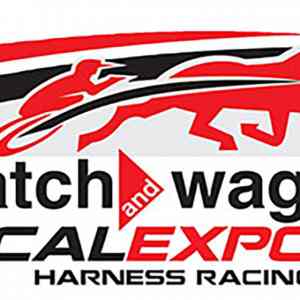Go With The Hot Hand
Study Driver and Trainer Stats to Gain an Advantage
A baseball manager gives a bench player a rare start, and he goes 4 for 5. He gives him another start and he goes 3 for 4, then 3 for 5, etc. Chances are, the manager will continue to start the player until he cools off.
This is called “going with the hot hand,” and the same concept applies to harness handicapping. When evaluating a horse’s chances, you should not evaluate just the horse, you must also evaluate the driver and trainer.
Make no mistake about it, harness drivers are athletes – driving a horse requires great reflexes, peripheral vision, a great sense of pace, cerebral skills, and strength. All-time dashwinner Dave Palone was a good baseball player as a youth. Corey Callahan played hockey for the University of Kentucky. Eric Carlson was a track and field star.
It is generally accepted that the driver in harness racing is more important than the jockey in Thoroughbred racing. I discussed the idea of the hot driver with veteran driver Mike Simons, who said “It matters most if you’re driving a horse who looks to be competitive in a particular race. When you put a couple of these races together, you build up momentum and take it from there.”
Note that Simons had been red-hot for a while, and he even won with two horses that paid triple digits to win at Pompano Park in a two-week span. He remains one of the leading drivers this meet.
As for the trainer, it seems as if most harness handicappers pay little attention to trainer changes, and which trainers are doing well. But there is every reason to believe that the trainer in harness racing is as important as the trainer in Thoroughbred racing.
In my January 2017 Hoof Beats column, I brought up the concept of an “inefficient market,” a Wall Street term. Harness handicapping is far from an efficient market and the concept of going with the hot drivers and hot trainers are two more market inefficiencies. I have known this for a long time, but I did not start formally charting these two angles until December 2016.
In my March 2017 Hoof Beats column, I detailed the “Moneyball” approach to handicapping. This involves charting the numerous variables involved in handicapping a horse and correlating the data with the $2 win price. Since then, the variable “hot driver” has an index of 1.19 and the variable “hot trainer” has an index of 1.23. Note that an index of 1.00 is break-even.
Who is a hot driver, and who is a hot trainer? This is largely a judgment call. A good rule of thumb would be if the Universal Driver Rating (UDR) for drivers and UTR for trainers has recently been 100-150 points higher than his career norms. Note that I rarely put the very best drivers such as Yannick Gingras and Tim Tetrick on the list because they are almost always good and rarely go into slumps. I have found that it is hard to make money on the very best drivers, because they tend to be heavily bet. But when a good–but not great–driver goes on a hot streak, there is money to be made. The programs give information on the driver/trainer stats.
Another source of information is your local track’s simulcast show host. In February, I was watching the Woodbine Racetrack show, and one of the hosts said that the Travis Cullen barn had been doing well. As a result, I put him on the list of hot trainers. A week or so later, I bet a horse he claimed and the horse won, paying $29.80. Drivers recently on the list include Jim Devaux, Andy Miller (at Freehold), and Ray Fisher Jr. Trainers on the list include Dolores Basilone, Nick Surick and Kimberly Asher.
Before I started charting these variables, I sometimes went with the hot hand on an informal basis. One of my favorite tracks is Plainridge Park, which opened for the season on April 10. In 2015, the first year Plainridge was a racino, Eddie Davis Jr. was definitely the “go-to” guy at the New England track. But it took more than half a season for me to realize this. I did not make the same mistake in 2016. It was obvious early on that Greg Merton was the “go-to” guy. It will be interesting who will be the “go-to” guy this year – it might be Davis, it might be Merton, and it might be somebody else.
As the late Bill McBride often wrote, the harness handicapper must always seek an edge. Finding drivers and trainers with “hot hands” can certainly give the handicapper an edge.
by Robert Gardner

